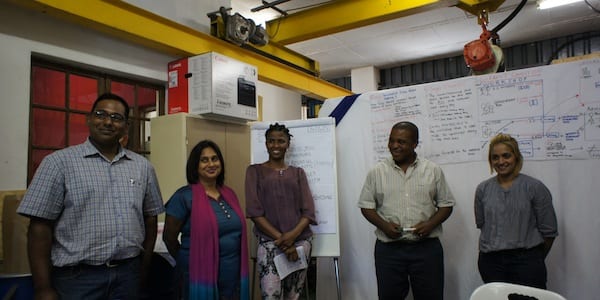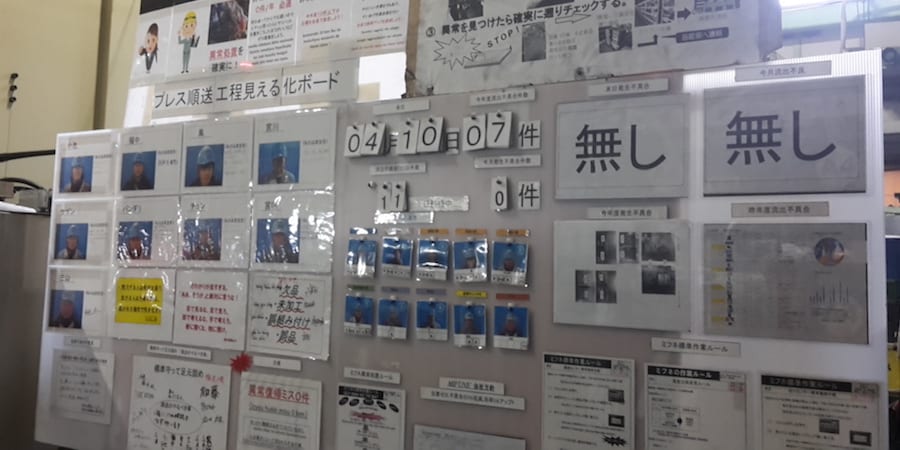
Lean transformation: eight tips from Philips
FEATURE – A few weeks ago, we learned how Philips is leading their lean transformation. In this follow-up article, the authors provide some great tips based on the company’s experience.
Words: Carolyn Lum, Senior Vice President, Head of Continuous Improvement and Philips Excellence, and Jakob Brix Danielsen, Senior Director, Group Continuous Improvement, Philips.
One of the most fundamental challenges of large enterprises is to get people from different parts of the organization to collaborate effectively. Although lean thinking has been around for some time to enable continuous improvement, most organizations still struggle to take it outside of operations and to go from improvements in “islands” of the business to a company-wide way of working.
Until a few years ago, Philips’ lean improvement work focused primarily on manufacturing – with some of our factories having been on a lean journey for decades. We knew that in order to unlock the full potential of lean, we needed to go beyond manufacturing.
We expanded to the commercial side of the business and evolved the approach to rapidly carry our lean transformation across the whole enterprise. We are seeing very positive results, not just in our bottom line, but also in our culture. Today, our associates speak the same language and the role of our leaders has changed dramatically.
But how did we do it?
The advice below (which stems from what we learned and what we could improve) is based on our experience and is not meant to be a silver bullet that will magically solve your problems; nonetheless, we hope it will inspire you.
So, here are eight tips from Philips to ensure a solid lean transformation:
- LOOK AT LEAN THINKING HOLISTICALLY. Taking lean principles and practices across the entire enterprise is different to applying it in a department or two, but ultimately it is the only way to ensure the sustainability of your transformation. The end-to-end processes that serve our customers touch every bit of Philips, so everybody needs to join the journey.
- TRANSFORM YOUR LEADERS’ WAY OF THINKING. In 2017, we decided we would train the most senior people in our company (more than 1,000!) in Lean Leadership. Our five-day Executive Lean Leadership Training is an intense week, during which our leaders learn to use the lean tools – from problem solving to daily management – and to coach others in using them. They are now taking lean to their own departments and influencing thousands of Philips employees. Getting the support of your CEO is also critical: we are lucky that our CEO is incredibly receptive to the lean message and supportive of our efforts. (In the article’s main picture, you can see the Philips Leadership Team, led by the CEO, having a dialogue on what changes are needed in their own behaviors to accelerate the Perform and Transform Journey. Off-sites like the one during which this picture was taken commenced in the spring of 2018 and continue to bring momentum to the “changing the culture from the top” in Philips.)
- DON’T BE AFRAID TO ‘DANCE’. Have you ever seen the dancing guy video? If not, check it out here. When we started to expand the scope of our lean transformation to non-manufacturing areas of the business, we were like the lone guy dancing in a field. We were not alone long, however, as early adopters began to step up and join us in the movement.
- MAKE YOUR EARLY ADOPTERS ROCK STARS. This is the best way for us to overcome resistance (every revolution has its naysayers). Early adopters are typically open to experimenting with new concepts, so they were our best opportunity to show the potential of kaizen. We were very fortunate with our early adopters, well-respected leaders, some of whom have been with Philips for over three decades. Upon seeing the speed of improvement thanks to lean thinking, people changed and decided they also wanted to join. They, too, wanted to be rock stars! Now we had a movement.
- TEACH LEAN TO EVERYBODY. An example of how impactful leadership can be in a lean transformation comes from our Executive Committee. In a prior role, one executive ensured that 100% of his team completed lean basics training, including gardeners and drivers. He always tells the story of how the driver came up with so many kaizens that he ended up saving more money than his annual salary. In this same executive’s new role, with many thousands of employees, this drive to train everyone in lean continued. After less than two years, 100% of the organization was lean trained.
- FOCUS ON A FEW, CRITICAL TOOLS. At Philips, we previously had a phased model with over 100 tools, whereas now we essentially focus on applying two of them very well: daily management and problem solving. This shift ended up being one of the biggest drivers in our lean transformation. It made it easier to spread lean across the organization. Think of it in these terms: in most households, you will find a hammer and a screwdriver, two basic tools that everybody needs to be able to use. If you go to a hardware store, however, you will find thousands of tools – which, most of the time, you do not need. At Philips, we try to empower as many people as possible to use their hammer and screwdriver to focus on the most important things that need fixing and apply a common, structured problem-solving process when engaging in the fixing. We do not teach everything to everyone. Daily management is fundamental for us, because without it we would not see problems. By using it, our teams know in real time if they are going to meet targets for order intake and revenue, among other key performance indicators. This way, they adjust the course whenever necessary to avoid finding themselves in an undesirable situation. Besides daily management and problem solving, there are a handful of lean tools we want everybody to be comfortable using, such as: Voice of the Customer, 5S, value stream mapping, kaizen events and standard work. Our Lean Agents in the Philips Business Transformation community act as the knowledgeable hardware store employee in guiding everyone in which tool to use when. First and foremost, the narrow initial focus on daily management and problem solving everywhere drives bottom-up predictability throughout the organization.
- DRIVE A CULTURE OF FEEDBACK. We always ask people to share their thoughts on what could be done better in one process or another, because without feedback there can be no improvement. Examples of this are peer learning sessions, best practice sharing, giving feedback and asking each other questions. This results in great insights: it is peer learning at its most effective. Giving and receiving feedback is also a key element of our Lean Leadership trainings. It accelerates the move towards servant leadership in our learning organization.
- UNDERSTAND THE ROLE OF COMMUNICATION. In hindsight, we could have leveraged the communications machine of Philips earlier and in a broader way. This could have accelerated our change. An integral element of driving continuous improvement is to build on and communicate successes. Ask the people, who have first-hand experiences with the successful transformations, to speak about their personal journey. Today, we are on a journey to accelerate our use of social media platforms such as Yammer to spread successes and best practices. We are also structurally improving our approach to knowledge management as a whole to always have the right people (subject matter experts) at arm’s reach when teaming up to transform at high speed, and to always have fast access to best practice for inspiration.
When people from various positions in the end-to-end process chain at Philips come together to work on performance topics, they speak the same language and leverage the same way of working. Whether it is Sales, Marketing, Product Management, Service, Research & Development or Manufacturing, they all know daily management and problem solving as well as the right leadership behavior and language around it. Ultimately, instead of working in islands they are now able to build bridges. This is how lean thinking has become a crucial enabler in our business transformation.
In a recent communication, our CEO said: ‘I am so happy see, that lean and daily management are being rolled out everywhere and that tens of thousands of the Philips team mates actually know what I am talking about when I say this’. This is the kind of commitment to lean that is communicated from the very top of Philips.
We certainly hope that you find these tips valuable and wish you the best on your own lean transformation.
THE AUTHORS


Read more


FEATURE – The authors share the main insights from a webinar with two Toyota leaders from South America, on the leadership practices that have allowed the company to sustain results for decades.


DOCUMENTARY – In PL’s first ever documentary, we share the story of a chain of car dealerships in Africa. Watch and learn how people development and lean leadership made for one of the best turnarounds you’ll ever encounter.


FEATURE - Norman Faull, Director of Lean Institute Africa, talks about a supplier development project the institute took part in, and shares a few of the results achieved.



NOTES FROM THE GEMBA – This month, the author shares her account of a recent gemba walk at a Tier 2 Toyota supplier, which has achieved impressive results by applying TPS.

